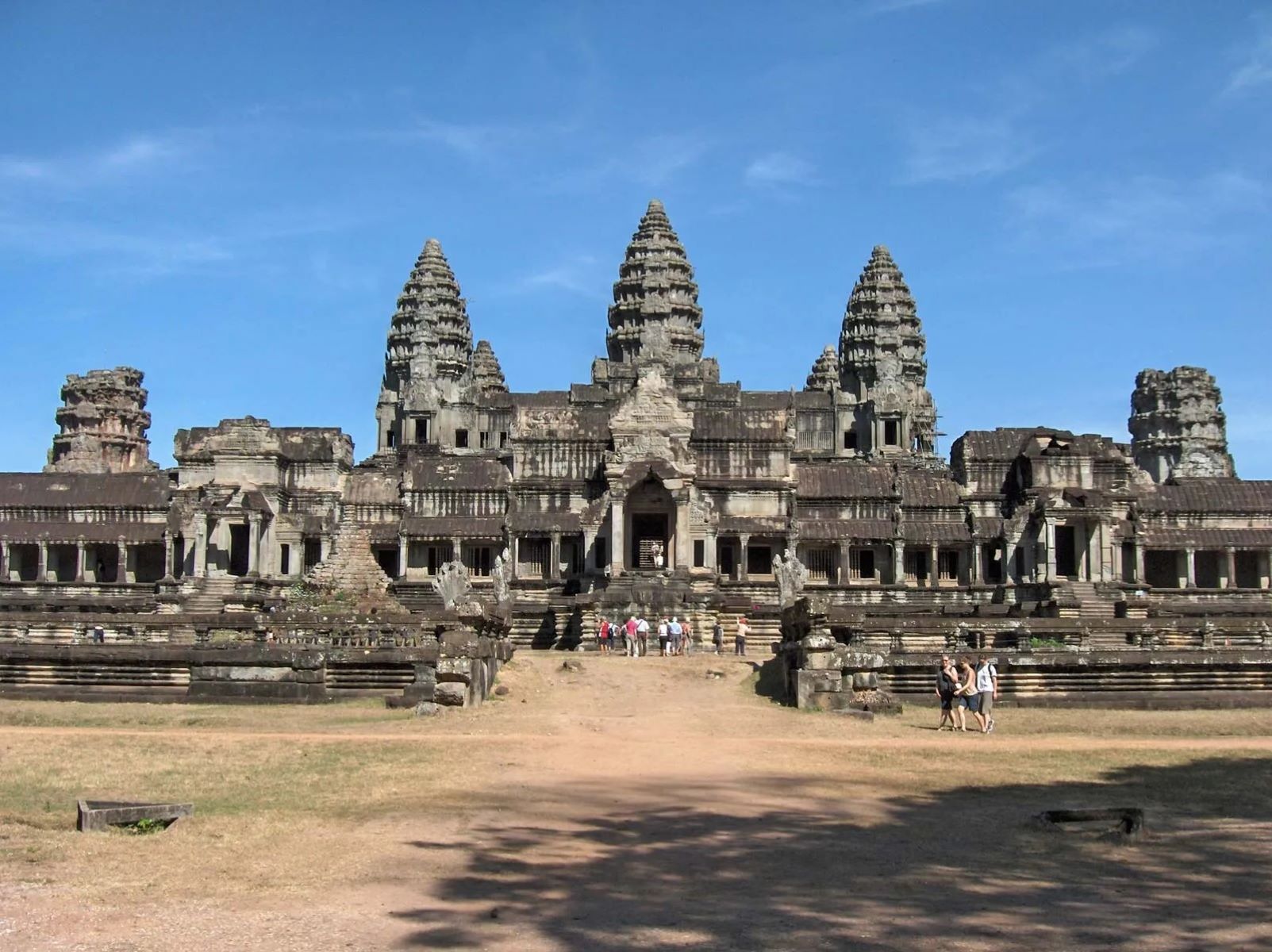Secrets Of Angkor Wat

Have you ever wondered what makes Angkor Wat so special? This ancient temple complex in Cambodia is one of the largest religious monuments in the world. Built in the early 12th century, it originally served as a Hindu temple dedicated to Vishnu before becoming a Buddhist site. The intricate carvings and massive stone structures showcase the incredible skill of the Khmer Empire. Walking through the temple grounds, you can almost feel the history come alive. From the iconic towers to the detailed bas-reliefs, every corner of Angkor Wat tells a story. Ready to learn more about this architectural marvel? Let's dive in!
The Majestic Angkor Wat
Angkor Wat, the largest religious monument in the world, is a marvel of Khmer architecture. Built in the early 12th century, it stands as a testament to the ingenuity and artistry of the Khmer Empire. Let's uncover some of the secrets hidden within this ancient wonder.
Hidden Chambers and Passages
Angkor Wat is not just a temple; it's a labyrinth of hidden chambers and passages. These secret areas were used for various purposes, from rituals to storage.
The Secret Library: Tucked away in the temple complex, this library once held sacred texts and manuscripts. Though many have been lost to time, the structure itself remains a fascinating glimpse into the past.
Underground Tunnels: Beneath the temple, a network of tunnels connects different parts of the complex. These tunnels were likely used by priests and royalty to move discreetly.
Hidden Shrines: Scattered throughout Angkor Wat are small, hidden shrines dedicated to various deities. These shrines often contain intricate carvings and statues.
Intricate Carvings and Bas-Reliefs
The walls of Angkor Wat are adorned with detailed carvings and bas-reliefs that tell stories of mythology, history, and daily life.
The Churning of the Ocean of Milk: This famous bas-relief depicts a Hindu myth where gods and demons work together to churn the ocean and obtain the elixir of immortality. The detail and craftsmanship are astounding.
Battle Scenes: Many walls feature carvings of epic battles, showcasing the might and valor of the Khmer warriors. These scenes provide insight into the military history of the empire.
Apsaras and Devatas: The temple is decorated with thousands of apsaras (celestial dancers) and devatas (minor deities). Each figure is unique, with distinct facial expressions and attire.
Astronomical Alignments
Angkor Wat is not just a religious site; it also serves as an astronomical observatory. The temple's layout and design align with celestial events.
Equinox Alignment: During the equinoxes, the sun rises directly over the central tower of Angkor Wat. This alignment highlights the temple's connection to the cosmos.
Lunar Calendar: The temple's design incorporates elements of the lunar calendar, with certain structures aligning with the phases of the moon. This suggests that the Khmer people had a sophisticated understanding of astronomy.
The Mysterious Moat
Surrounding Angkor Wat is a massive moat, which adds to the temple's grandeur and mystery. The purpose of this moat goes beyond mere aesthetics.
Symbolic Representation: The moat symbolizes the oceans surrounding Mount Meru, the center of the universe in Hindu and Buddhist cosmology. This reinforces the temple's spiritual significance.
Hydraulic Engineering: The moat also served practical purposes, such as irrigation and flood control. The Khmer engineers' skill in managing water resources was crucial to the empire's success.
Restoration and Preservation Efforts
Over the centuries, Angkor Wat has faced natural decay and human interference. Efforts to restore and preserve this iconic site are ongoing.
French Restoration: In the early 20th century, French archaeologists began extensive restoration work, using advanced techniques to stabilize and repair the temple.
Modern Conservation: Today, international teams continue to work on preserving Angkor Wat. This includes using modern technology to monitor the site's condition and prevent further damage.
The Enigmatic Faces of Bayon
While Angkor Wat is the most famous temple, the nearby Bayon temple is equally intriguing with its enigmatic faces.
Smiling Faces: Bayon is known for its towers adorned with smiling faces, believed to represent either King Jayavarman VII or the bodhisattva Avalokiteshvara. These faces exude a sense of serenity and mystery.
Hidden Galleries: Like Angkor Wat, Bayon also has hidden galleries filled with carvings depicting scenes of daily life, battles, and religious rituals. These galleries offer a deeper understanding of the Khmer culture.
The Sacred Banteay Srei
A short distance from Angkor Wat lies Banteay Srei, a temple known for its exquisite carvings and pink sandstone.
Intricate Details: Banteay Srei's carvings are considered some of the finest in Khmer art. The temple's small size allows for incredibly detailed work, with scenes from Hindu mythology and floral patterns.
Preservation: Unlike other temples, Banteay Srei has remained relatively well-preserved due to its remote location. This has allowed visitors to appreciate its beauty in near-original condition.
Timeless Wonder of Angkor Wat
Angkor Wat is a timeless wonder. Its ancient architecture and rich history make it a must-see. Walking through its temples and ruins, you feel the mystery and grandeur of the Khmer Empire. The intricate carvings and massive stone structures tell stories of a civilization that thrived centuries ago.
Visiting at sunrise or sunset offers breathtaking views. The reflection of the temple in the surrounding moat is unforgettable. Local guides can provide deeper insights into the cultural significance and historical context of this UNESCO World Heritage site.
Angkor Wat isn't just a place to see; it's an experience that stays with you. Whether you're a history buff, an architecture enthusiast, or just someone who loves to explore, Angkor Wat has something for everyone. Make sure to add it to your travel bucket list.

